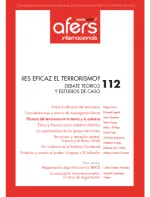Violence and access to power in Latin America: Uruguay and El Salvador

This article reflects on the role of violence as a key strategy used by the Latin American left wing to access power since the victory of the Cuban Revolution (1959). It also looks at the spread of certain readings of this revolutionary process – political, social and of the actions themselves – that have great mobilising power and whose key element is violence. The case studies are Uruguay and El Salvador (from 1959 to 1996), which are of interest due to their differences within the revolutionary wave of Latin’s America’s “new left”, the challenging degree of their mobilisation,and their subsequent incorporation into the political system. For each, the justifications for resorting to violence are analysed, along with their interpretation and the repertoire of tactics used. It concludes with a reflection on the end of these experiences, the abandonment of violence and their achievements and limitations.
Key words: revolutionary violence, MLN-T,FMLN, Uruguay, El Salvador, Latin America
>> The full text articles of this issue are available only in Spanish language
DOI: doi.org/10.24241/rcai.2016.112.1.173